Breathing is automatic — but how you breathe matters more than you think.
Whether you breathe through your nose or your mouth can impact everything from your sleep and mood to your immune system and facial structure. Most people don’t realize the difference until they’re struggling with congestion or waking up with a dry mouth.
But the science is clear. Nasal breathing is not just more comfortable — it’s better for your health.
In this guide, you’ll learn why nasal breathing is so beneficial, what gets in the way, and how to retrain your body to breathe better through simple exercises and easy habits.
Why Nasal Breathing Matters
Most people don’t think about their breathing habits until they run into trouble—like a stuffy nose or waking up with a dry mouth. Yet, studies show that over half of adults regularly breathe through their mouths, especially at night or during exercise. While mouth breathing can be necessary when you’re congested or exercising hard, making it a habit can lead to a range of problems.
Your nose is designed to be the main passage for air. It filters, warms, and humidifies the air you breathe, preparing it for your lungs. Unlike the mouth, the nose also produces nitric oxide, a compound that helps your body absorb oxygen and fight germs. If you’re not breathing through your nose, you’re missing out on these natural benefits.
10 Key Benefits of Nasal Breathing
1. Filters and Protects
The nose is your body’s first line of defense against dust, pollen, bacteria, and viruses. Tiny hairs and folds inside your nose trap these particles, keeping your lungs cleaner and reducing your risk of getting sick or developing allergies.
2. Warms and Humidifies Air
Nasal passages warm and add moisture to the air before it reaches your lungs. This process prevents your airways from drying out, which can cause coughing, irritation, and even increase your risk of respiratory infections.
3. Boosts Oxygen Uptake and Circulation
Nasal breathing increases nitric oxide production, which helps widen blood vessels and improve blood flow. This means your body gets more oxygen with every breath. Research shows nasal breathing can increase oxygen uptake by 10–20% compared to mouth breathing.
4. Supports Immune Function
By filtering out germs and adding moisture to the air, nasal breathing helps your immune system do its job. The nose also produces antimicrobial chemicals that fight off bacteria and viruses before they reach your lungs.
5. Improves Sleep Quality
Breathing through your nose at night helps keep your airway open, reducing snoring and the risk of sleep apnea. Mouth breathing, on the other hand, is linked to poor sleep, dry mouth, and even dental problems.
6. Enhances Cognitive Function and Mood
Nasal breathing activates the parasympathetic nervous system, which helps you relax and feel calmer. Studies have also shown that breathing through your nose can improve memory, focus, and even your mood.
7. Promotes Healthy Facial Development
For children, nasal breathing is especially important. It supports natural development of the jaw, teeth, and facial bones. Mouth breathing can lead to changes in facial shape, a weaker jawline, and dental issues.
8. Regulates Blood Pressure and Heart Rate
Nasal breathing helps lower blood pressure and heart rate by encouraging a “rest and digest” state in your nervous system. This can reduce stress and support heart health.
9. Supports Oral Health
Breathing through your nose helps keep your mouth closed, which prevents dry mouth and supports a healthy oral microbiome. This can lower your risk of cavities, gum disease, and bad breath.
10. Reduces Risk of Respiratory Issues
Nasal breathing helps reduce the risk of developing respiratory problems like asthma and bronchitis, as the nose filters out irritants and pathogens more effectively than the mouth.
Common Barriers to Nasal Breathing
Even though nasal breathing is the healthiest way to breathe, many people struggle with it due to:
- Nasal congestion: Allergies, colds, or sinus infections can block your nose and force you to breathe through your mouth.
- Structural issues: Conditions like a deviated septum or enlarged adenoids can make nasal breathing difficult.
- Habitual mouth breathing: If you’ve been breathing through your mouth for years, it can feel unnatural to switch to your nose.
- Sleep disorders: Conditions like sleep apnea often lead to mouth breathing at night.
- Environmental factors: Dry air, pollution, or irritants can make your nose feel stuffy or blocked.
If you’re dealing with constant nasal congestion or breathing difficulties, it’s a good idea to consult a healthcare professional or ENT specialist.
Exercises to Improve Nasal Breathing
With regular practice, most people can improve their ability to breathe comfortably through their nose. Here are some effective nasal breathing exercises to try:
1. Alternate Nostril Breathing (Nadi Shodhana)
This simple exercise helps clear your nasal passages and calm your mind.
How to do it:
- Sit comfortably with your back straight.
- Use your right thumb to close your right nostril and inhale through your left nostril.
- Close your left nostril with your right ring finger, release your right nostril, and exhale through the right.
- Inhale through the right nostril, then switch and exhale through the left.
- Repeat for 5–10 minutes.
2. Belly Breathing (Diaphragmatic Breathing)
Strengthening your diaphragm can make nasal breathing easier.
How to do it:
- Sit or lie down comfortably.
- Place one hand on your chest and one on your belly.
- Inhale slowly through your nose, feeling your belly rise.
- Exhale slowly through your nose.
- Repeat for 5–10 minutes.
3. Breath of Fire
This energizing exercise helps clear nasal passages and strengthen breathing muscles.
How to do it:
- Sit up straight.
- Inhale deeply through your nose, letting your belly expand.
- Exhale forcefully through your nose while pulling your belly in.
- Continue with quick, rhythmic breaths for 30 seconds.
4. Myofunctional Therapy
These exercises train your mouth and tongue muscles to support nasal breathing.
Sample exercise:
- Place the tip of your tongue on the roof of your mouth and hold for 10 seconds. Repeat several times a day.
5. Balloon Blowing
Blowing up a balloon through your nose can help strengthen your nasal passages and respiratory muscles.
How to do it:
- Sit up straight with your mouth closed.
- Inhale through your nose and exhale into a balloon, keeping your lips sealed around the opening.
- Repeat several times, resting between attempts.
6. Nasal Strips for Support
If you struggle with nasal congestion or narrow passages, using nasal strips can help gently open your nasal airways. These strips are designed to lift the sides of your nose, making it easier to breathe comfortably through your nose, especially at night or during exercise.
Tips for Making Nasal Breathing a Habit
Switching from mouth to nasal breathing takes patience and consistency. Here are some helpful tips to make nasal breathing your default:
- Practice daily: Set aside a few minutes each day for nasal breathing exercises.
- Use mouth tape at night: Products like Bouche’s mouth tape gently keep your lips closed while you sleep, encouraging nasal breathing and improving sleep quality. Bouche’s tape is medical-grade, hypoallergenic, and designed for comfort—even for those with sensitive skin or beards.
- Pair with nasal strips: If you have trouble keeping your nasal passages open, try Bouche’s nasal strips alongside mouth tape for extra support.
- Address congestion: Use saline sprays, humidifiers, or consult a doctor if you have chronic nasal blockage.
- Stay mindful: Check in with yourself throughout the day. If you notice you’re breathing through your mouth, gently close your lips and switch to your nose.
- Strengthen your airway: Regular practice of myofunctional therapy and breathing exercises can help keep your nasal passages clear and functional.
- Create a bedtime routine: Make nasal breathing part of your nightly wind-down. Clean your nose, apply a nasal strip if needed, and use mouth tape to help your body adjust to breathing through your nose all night.
Bouche: Science-Backed Support for Better Breathing
At Bouche, we believe that simple, natural solutions can make a big impact on your health. Our flagship mouth tape is designed to help you breathe through your nose while you sleep, supporting deeper rest, better oxygenation, and long-term wellness. Made with medical-grade, hypoallergenic materials, Bouche tape is gentle on sensitive skin, latex-free, BPA-free, and fragrance-free. It’s also CPAP-compatible, making it a great choice for anyone seeking better sleep and improved breathing.
For those who need extra help opening their nasal passages, Bouche’s nasal strips provide instant relief by gently lifting the sides of the nose. These strips are made with flexible, skin-safe materials and are easy to use as part of your nightly routine. Many people find that combining mouth tape and nasal strips is the most effective way to make nasal breathing comfortable and natural.
Thousands of customers have noticed improvements in their sleep quality, energy levels, and overall well-being after making nasal breathing a habit with Bouche products. With a 30-day risk-free guarantee and excellent customer support, it’s easy to see why Bouche is trusted by so many.
Final Thoughts
Nasal breathing supports your body from head to toe — from improved sleep and sharper focus to better immunity and cardiovascular health. If you're looking for a simple way to feel and function better, start with how you breathe.
With regular practice, helpful tools, and a bit of patience, nasal breathing can become second nature.
Want to start tonight? Explore Bouche’s nasal strips and mouth tape to support natural, effortless breathing while you sleep.
Frequently Asked Questions
Q. Does nasal breathing improve jawline?
Yes, nasal breathing supports proper jaw and facial development, especially in children. Chronic mouth breathing can lead to a weaker jawline and changes in facial structure.
Q. Do mouth breathers live longer?
There is no direct evidence that mouth breathers have a shorter lifespan, but mouth breathing is linked to health issues like poor sleep, increased risk of infections, and dental problems, which can affect overall health.
Q. What are the benefits of nostril breathing?
- Filters dust and germs
- Warms and humidifies air
- Boosts oxygen uptake
- Produces nitric oxide for better blood flow
Q. Can you fix face shape by nose breathing?
Nasal breathing can help prevent and sometimes reverse mild changes in facial structure, especially if started early in life. Severe changes may require professional intervention.
Q. What is the 4-7-8 method?
Breathe in through your nose for 4 seconds, hold for 7 seconds, and exhale slowly through your mouth for 8 seconds. This technique calms the nervous system and helps with relaxation.
References available upon request. For more science-backed wellness tips and breathing support, visit Bouche.








